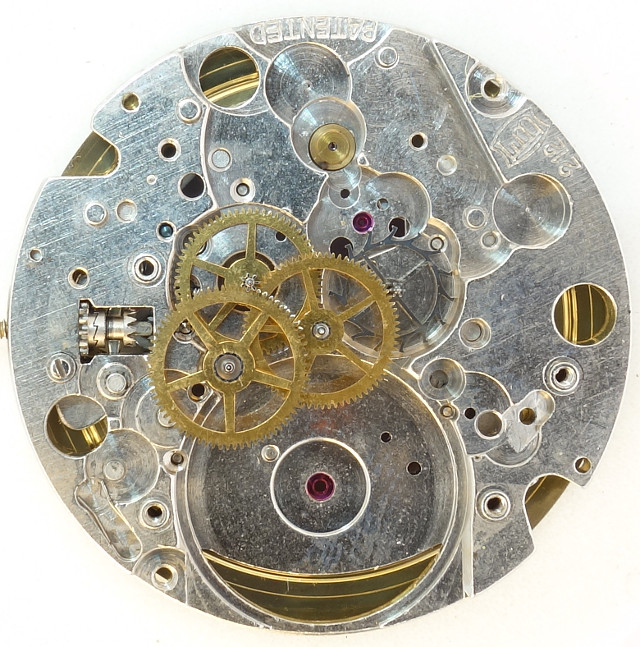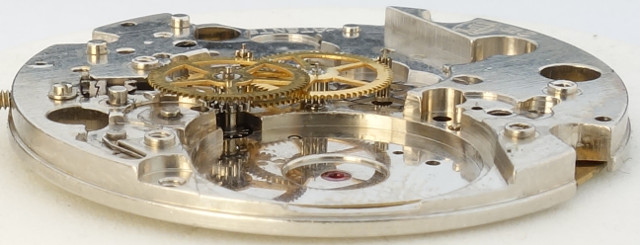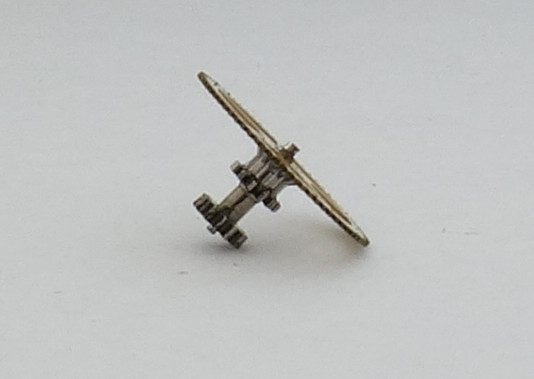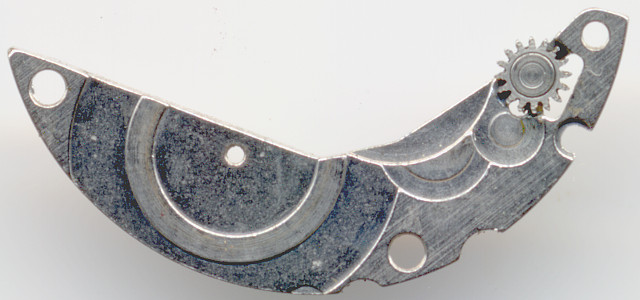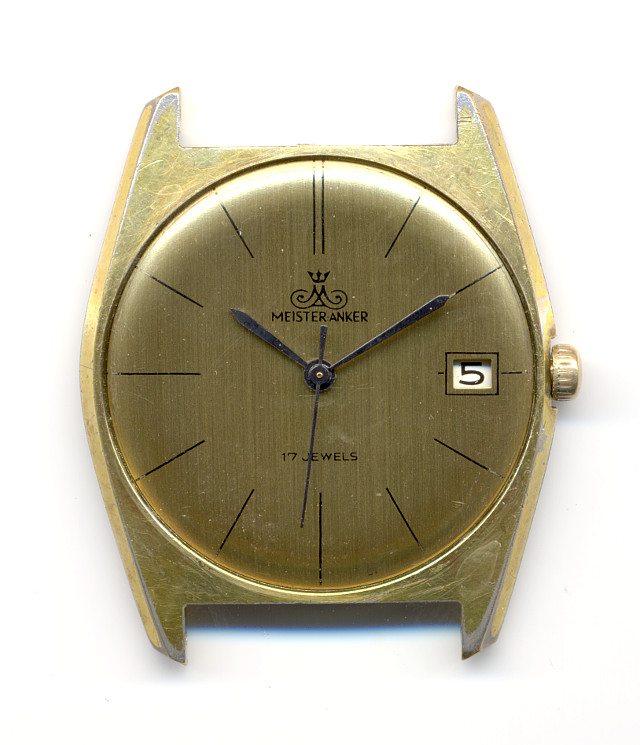Description
The Förster 212 is part of the final gents watch caliber series from Förster, which debuted in 1969. At the time, it was even cited as the most flat german ebauche and it can come up with some modern construction details.
Its diameter is 11 1/2 lignes, and its overall height only 3.5mm.
The empty base plate already shows some specialities: The mainspring barrel is pretty large and almost touches the center of the movement, and there’s no center minute wheel any more, since the motion works is driven by the second wheel (here near 8 o’clock near the center).
Since the pointer friction is implemented in that wheel, over the time, it shows a drawback in terms of a reduced friction, which causes the hands to stop although the movement is still ticking. The more often you adjust the hands, the more likely is that error.
Of course, all important bearings are ruby-equipped, except for the dial side bearing of the directly driven center second.
The gear train starts with the mainspring barrel, followed by the second wheel, third wheel, center seconds wheel and finally the steel escape wheel.
The Förster 212 uses a modern three-leg anular balance, which beats with the usual 21600 A/h of that time. It regulates a conventional swiss pallet lever movement and is shock protected (here in two KIF Trior bearings). The effective length of the hairspring can be adjusted with a long hairspring key.
On the magnified second wheel, you see the double gear, whose lower teeth drive the motion works and is equipped with a slip gear.
This gear is the culprit, when the hour and minute hands no longer move, but the second hand is ticking. To fix it, is pretty difficult.
Probably to save height, the riveted crown wheel is located on the inside of the barrel bridge. Between it and the ratchet wheel, there are two transmissions wheels. The second one and not the crown wheel is blocked by the click.
One of the features of Förster 212 is its date mechanism, with a whole series of (usually very well airworthy) springs, which is anything but easy to disassemble, and therefor, it wasn’t touched here, since it still works.
The date advances instantly at midnight, there is no longer visible date change. The correction can be made either semi-fast by turning the time back and forth (and thus ruining the slip gear of the second wheel over time) or on some versions by pulling the crown beyond the time setting stage. The specimen shown here is lacking this quickset mechanism.
The driving wheel at 9 o’clock spans the cocking slide throughout the day and its spring. It can be seen between 9 and 11 o’clock on the dial side. Around Midnight, the tension is instantly released and the Date ring is incremented one step counterclockwise.
As you can see, the Förster 212 is a very modern construction, unfortunately with a few drawbacks and not very service-friendly, but still a must have for every collection!
In the lab
Timegrapher result
Although only an inexpert service was made, the timegrapher values are really good. With a maximum deviation over all positions with only 19 seconds, it shows impressively its great construction quality!| horizontal positions | |||
|---|---|---|---|
| dial up | -11 s/d | 298° | 0.1ms |
| dial down | +1 s/d | 283° | 0.0ms |
| vertical positions | |||
| crown right (12 up) | -26 s/d | 265° | 0.3ms |
| crown up (3 up) | -30 s/d | 260° | 0.0ms |
| crown left (6 up) | -24 s/d | 255° | 0.0ms |
| crown down (9 up) | -7 s/d | 272° | 0.4ms |
Technical data
| Manufacturer: | Förster |
| Caliber: | 212 |
| Size: | 11 1/2''' (measured: 25,6mm) |
| A/h: | 21600 |
| Number of jewels: | 17 |
| Escapement: | Pallet lever |
| Balance types: |
Nickel screw balance |
| Shock protection(s): |
KIF Trior |
| Balance bearing / direction hairspring: | Clockwise |
| Moveable stud: | yes |
| Adjust mechanism: | Hairspring key |
| Construction: |
|
| Construction type: | solid construction |
| Winding mechanism: | yoke winding system |
| Setting lever spring: | 2 hole(s) |
| Features: |
|
| References: |
Flume: K3 - |
| Mentioning in literature (years): | 1969 |
| Inventory number: | 18021 |


